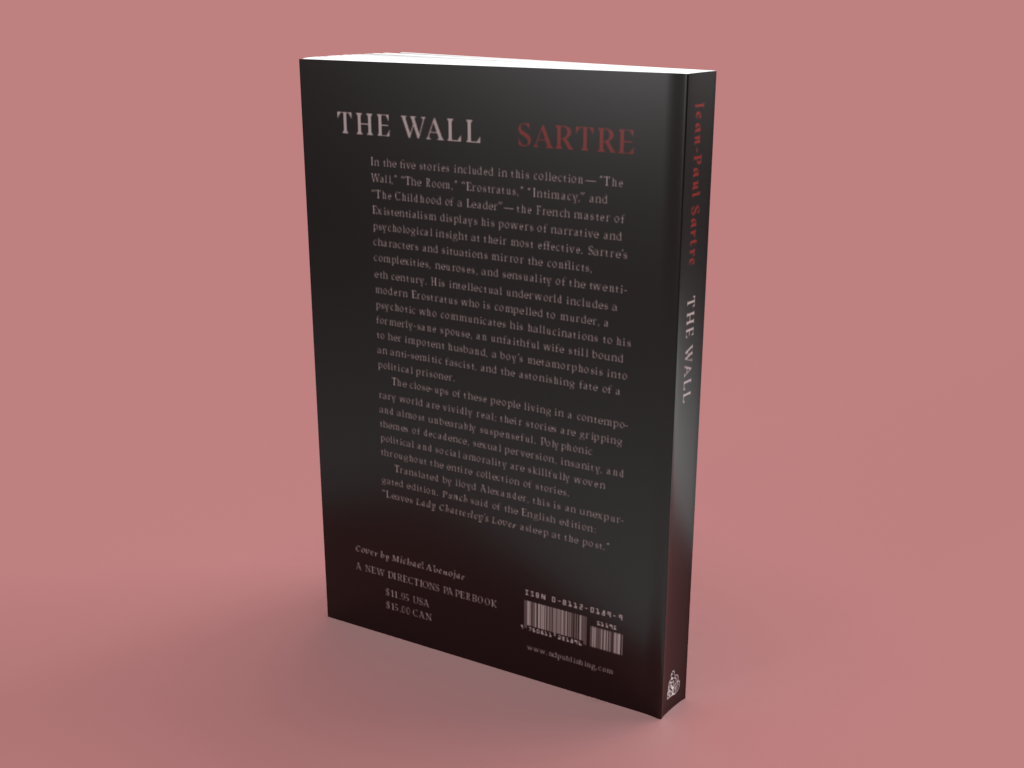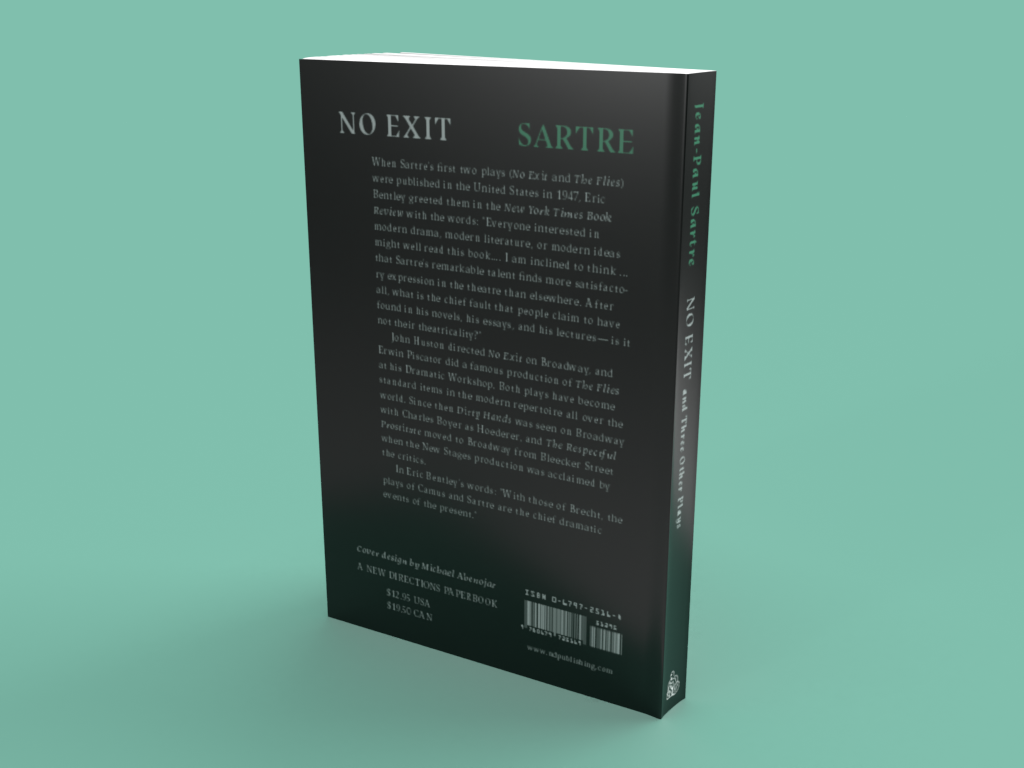A system of book redesigns for a series of philosophical works of fiction.
☞ book design, illustration, typography
☞ student project
Context
Platitudes aside, we actually do judge books by their cover, at least initially when we know little about their contents. Book covers inform readers about important information, such as genre and content. And while it's important to consider the cover, the typesetting and layout of a book's interior is just as important. Thus, good book design can facilitate a satisfying reading experience, visual appeal, communication of tone and meaning, and commercial viability.
Process
Attracted to the fictional narratives of existentialist philosopher Jean-Paul Sartre, I chose three of his published works to redesign as a unified set. In my research, I found that the visual codes associated with philosophical literature seem to focus on abstraction so as to do the work of communicating the characteristic abstract thinking required of the content.






Concept
In accordance with the subject matter, the visual codes reflect a centring and grappling with the subjective human experience. The system uses a visual language that draws from the abstraction of philosophical thinking and the humanist underpinnings of existentialist thought, while reflecting the anxious, absurd, and oppressive tones used in all three narrative compositions.
